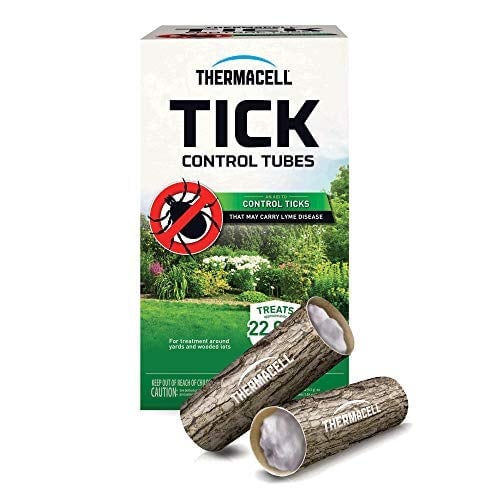Thermacell Tick Control Tubes for Yards; 24 Tubes; Protects 1 Acre from Ticks; No Spray, Now 20% Off
Save 20% on Thermacell Tick Control Tubes for Yards; 24 Tubes; Protects 1 Acre from Ticks; No Spray at Amazon

Drifting into your backyard to enjoy some quality leisure time can turn into an unpleasant experience if your yard is infested with ticks. Here’s your chance to reclaim your lawn from these uninvited guests with the Thermacell Tick Control Tubes.
Suggested Reading
Developed by the Harvard University School of Public Health, the Thermacell Tick Control Tubes are a reliable and efficient tool to get rid of ticks. They are a no-spray, no-mess option to kill deer ticks and prevent the spread of Lyme and other diseases such as babesiosis or anaplasmosis.
Related Content
Designed to be used twice a year, specifically during spring and summer, 24 of these tubes can protect up to an acre per application. For comprehensive coverage, place these tubes around places that attract mice - like rock walls, wood piles, brush, sheds, gardens, and wooded areas - at approximately 10 yards apart.
The inactive ingredient in the Thermacell Tick Control Tubes, Permethrin, is uniquely emitted by the tubes - working with rodents, which ticks feed on, to lower the tick population without harming the environment or other animals and people.
The Thermacell Tick Control Tubes are especially effective in areas where Lyme disease is concentrated, such as New England, Mid-Atlantic, and Northern Woods. So if you live in these regions or places with similar environmental conditions, this product could be a game-changer for you, offering peace of mind and a tick-free backyard.
Most tick bites happen in yards, causing a major risk for pets and family members. Therefore the Thermacell Tick Control Tubes are the ideal defense mechanism to protect your pets and family members, promising a safe space to thrive in.
Enjoy a significant discount of 20% on your purchase of this eco-friendly solution on Amazon today! Not to forget, every Thermacell product is backed by a 1-year Thermacell Satisfaction Guarantee. So do not wait any longer - seize this opportunity to safeguard your loved ones against ticks with the Thermacell Tick Control Tubes.
This article was generated by an AI engine which may produce inaccurate information.
